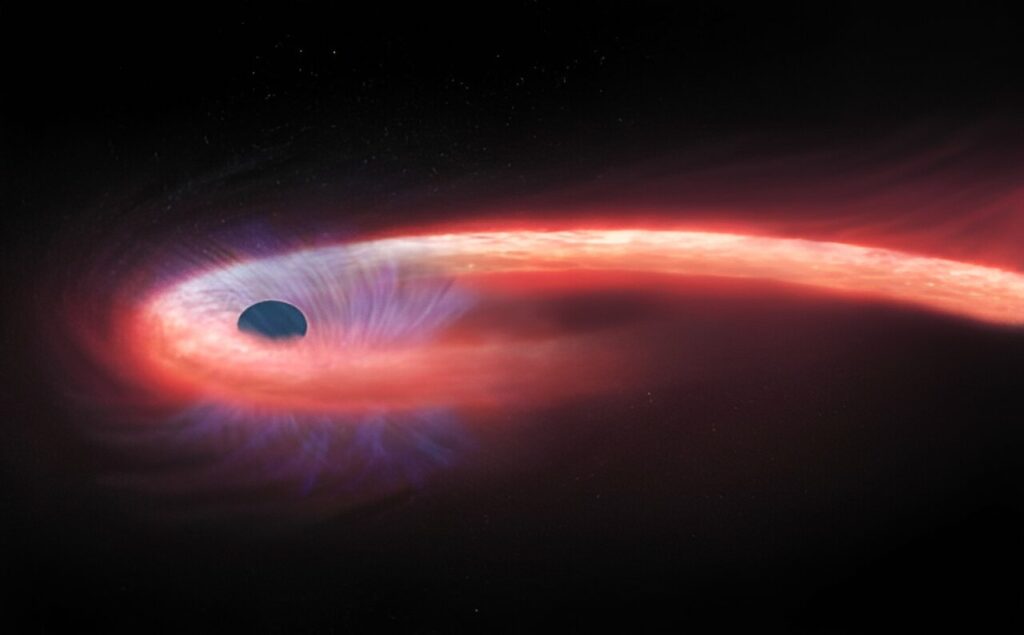Research Investigates Characteristics of a Subtle Tidal Disruption Event
Using a spectral synthesis code specifically designed to replicate conditions in interstellar matter, astronomers have delved into the intricacies of a subtle tidal disruption event (TDE) known as iPTF16fnl. The outcomes of this investigation, published on December 29 on the pre-print server arXiv, offer valuable insights into the characteristics of this particular TDE.
Tidal disruption events (TDEs) are astronomical phenomena that transpire when a star comes close enough to a supermassive black hole, succumbing to the black hole’s tidal forces and undergoing a process of disruption. This results in tidally-disrupted stellar debris cascading onto the black hole, with radiation emanating from the innermost region of the accreting debris serving as an indicator of the presence of a TDE.
The collision between the debris streams causes energy dissipation, potentially leading to the formation of an accretion disk. As a result, astronomers view TDEs as potentially crucial probes for studying strong gravity and accretion physics, offering insights into the development and evolution of supermassive black holes. iPTF16fnl, discovered on August 29, 2016, by the intermediate Palomar Transient Factory (iPTF), represents a relatively faint optical TDE situated at the center of the galaxy Markarian 950, approximately 217 million light years away. Notably, it exhibits faster decay timescales compared to most known TDEs, with an estimated black hole mass about 2 million times that of the sun, and the disrupted star’s mass calculated to be 0.03 solar masses.
To gain a deeper understanding of iPTF16fnl’s properties, a team of astronomers, led by T. Mageshwaran, employed CLOUDY, a numerical spectroscopic simulation code. CLOUDY facilitated the modeling of the optical spectral lines from iPTF16fnl at three distinct epochs, providing insights into the underlying physical conditions.

The investigation revealed that in the case of iPTF16fnl, the black hole possesses a mass of approximately 673,000 solar masses, while the disrupted star weighs around 2.6 times more than the sun. The estimated age of the host galaxy of the Tidal Disruption Event (TDE) was approximately 650 million years.
As per the findings outlined in the paper, the outflow, manifesting as a wind emanating from the formed accretion disk of iPTF16fnl, exhibits a velocity of around 7,447 km/s, and the wind’s inner radius was measured to be approximately 1.5 AU. The time taken for the formation of the disk was calculated to be 13.25 days. The research established that the disk of iPTF16fnl displays moderate clumpiness and radiative inefficiency.
The astronomers emphasized that, initially, the mass outflow rate surpasses the mass accretion rate, but it was observed that the mass outflow rate decreases rapidly compared to the mass accretion rate. Moreover, the results indicate that the helium-to-hydrogen number density ratio of the wind falls between 0.1 and 0.15, making it comparable to that of the sun. This suggests that the tidally-disrupted star initially belonged to the main sequence category.
This article is republished from PhysORG under a Creative Commons license. Read the original article.
Do not forget to share your opinion with us to provide you with the best posts !




0 Comments